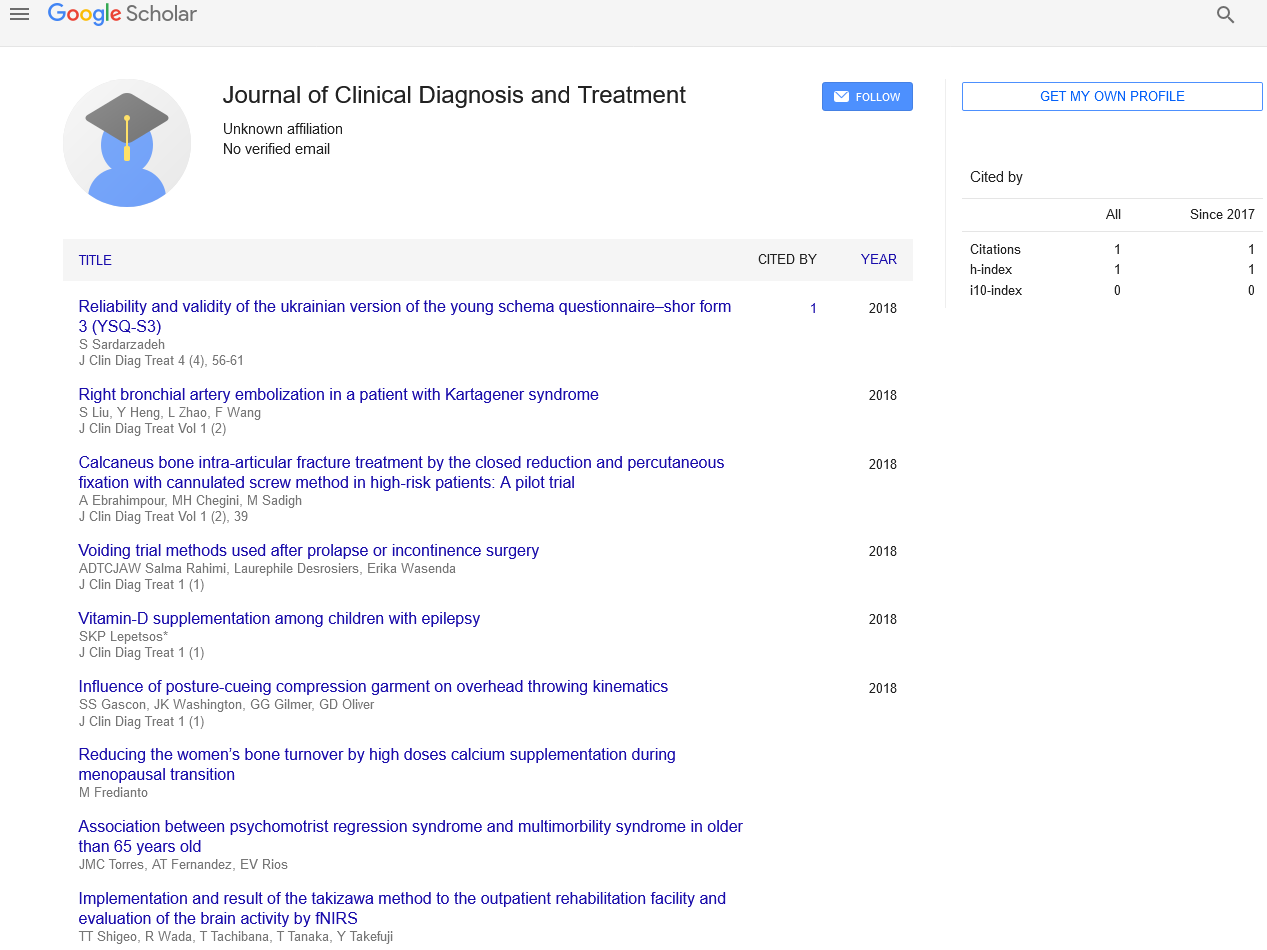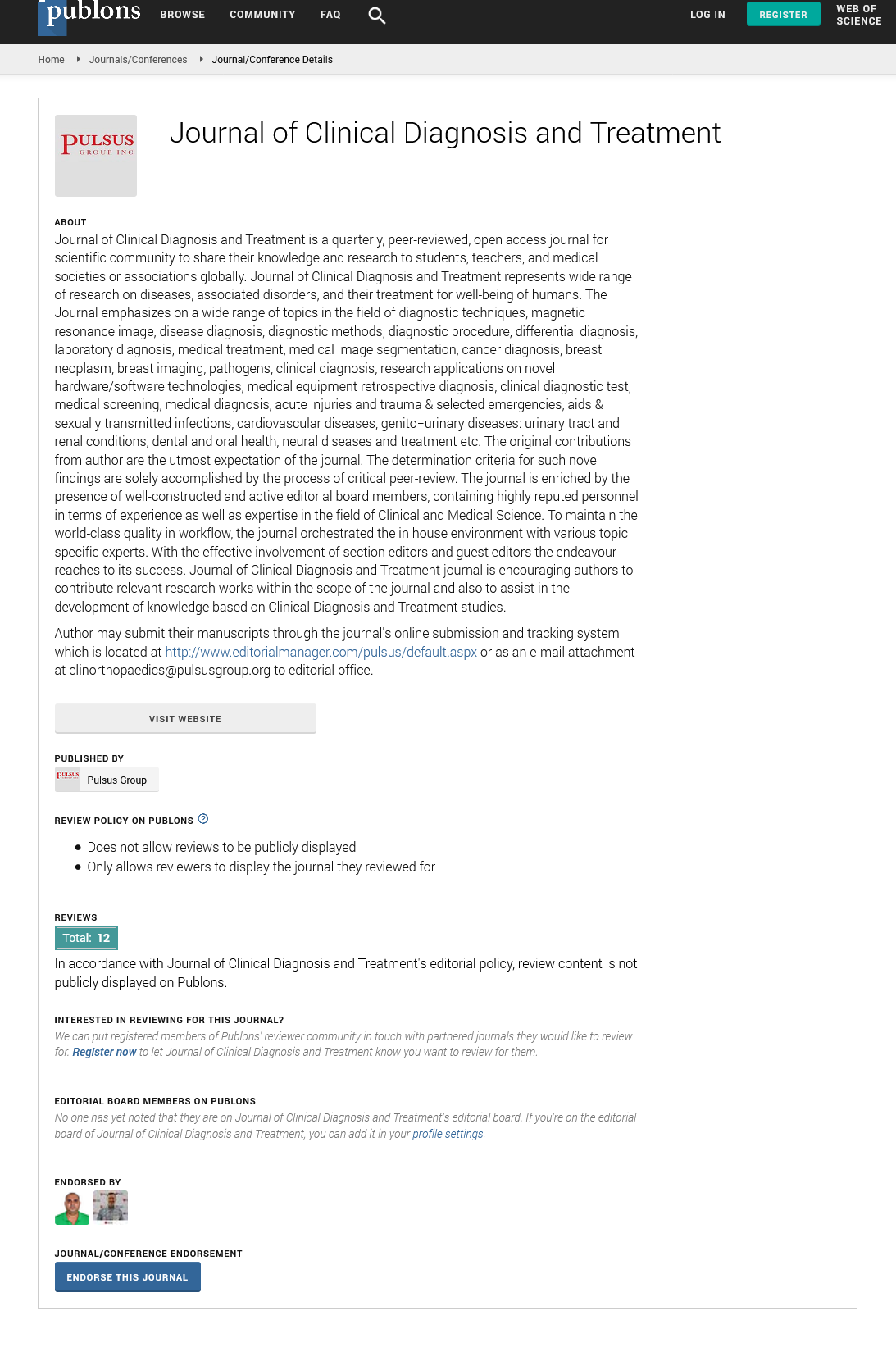Diabetes and genitourinary infection
Received: 18-Feb-2022, Manuscript No. PULJCDT-22-4285; Editor assigned: 20-Feb-2022, Pre QC No. PULJCDT-22-4285(PQ); Reviewed: 28-Feb-2022 QC No. PULJCDT-22-4285(Q); Revised: 02-Mar-2022, Manuscript No. PULJCDT-22-4285(R); Published: 12-Mar-2022, DOI: 10.37532/puljcdt.22.4(2).14-15
This open-access article is distributed under the terms of the Creative Commons Attribution Non-Commercial License (CC BY-NC) (http://creativecommons.org/licenses/by-nc/4.0/), which permits reuse, distribution and reproduction of the article, provided that the original work is properly cited and the reuse is restricted to noncommercial purposes. For commercial reuse, contact reprints@pulsus.com
Abstract
Diabetes is known to increase the risk of infection, the most frequent of which involve the genitourinary tract. Infections in diabetes patients are distinct in that they are recurring, more severe, necessitate hospitalisation, and have a higher death rate than nondiabetics. Some infections, such as emphysematous pyelonephritis, are only encountered in diabetics, whereas others have a convoluted natural history related to hyperglycemia. In diabetics, asymptomatic bacteriuria can develop to albuminuria and urinary tract infection and may require treatment. Not only do certain organisms have a preference for the diabetes patient's genitourinary tract. Because of the above, diabetes patients are more sensitive to infections, and prompt diagnosis and treatment are essential.
Introduction
Diabetes is known to increase the risk of a variety of vascular illnesses by doubling the risk. In comparison to a nondiabetic, a 50-year-old diabetic with no history of vascular disease dies 6 years younger on average. It's worth noting that nonvascular illnesses including cancer, infections, and neurological disorders account for 40% of lost years of life.Among the infections that plague diabetes patients, those affecting the genitourinary tract are the most prevalent. There is a 60% rise in the risk of urinary tract infection (UTI) and a two- to four-fold increase in the risk of genital tract infection. Diabetes-related UTIs are distinguished by the fact that they affect the upper tract in 80 percent of cases, are bilateral in the majority of cases, and are more prone to consequences.Despite the fact that diabetics get longer and more powerful initial therapy, recurrence rates are 25-45 percent, which is much higher than in nondiabetics.
The more difficult the UTI and the frequency with which it occurs, the greater the chance of hospitalisation, resulting in financial burden for the patient. There is also an increase in morbidity and death as a result. In a nation like ours, where health-related expense is a key limiting factor for access to decent healthcare, it is critical that a primary care physician be knowledgeable about the diagnosis, treatment, and prevention of UTI in this high-risk population. Diabetes patients' immune systems are affected in a number of ways. Polymorpholeukocyte function is impaired, especially in the presence of acidosis. Adhesion, chemotaxis, and phagocytosis of leukocytes may be altered. Antioxidant systems involved in bactericidal action may be compromised as well. The humoral activity looks to be normal, as do the vaccination reactions.
Prostatic abscess
Prostatic abscess is an uncommon illness that nearly always affects diabetics and people who have been catheterized for an extended period of time. It should be suspected when there are recurring and persistent signs of fever, dysuria, and urethral discharge despite sufficient treatment.
Diagnosis
Transrectal ultrasonography (TRUS) can aid if a digital rectal examination does not reveal any fluctuation.
Treatment
Appropriate antibiotics and drainage are used as treatment.
Candida in the urinary tract
Candida albicans and, less frequently, Candida glabrata infection is common among diabetics, particularly when broad-spectrum antibiotics or indwelling catheters are used. They might be asymptomatic or have cystitis, pyelonephritis, or fungal ball blockage. A urine culture with 105 cfu/ml of Candida is used to make the diagnosis. Fluconazole or parenteral Amphotericin B are used to treat the condition. A fungus ball must be removed with a cystoscope or ureteroscope, and in some cases, an open operation is necessary.
Fournier's gangrene
It is a necrotizing fasciitis of the male genitalia. The patient complains of discomfort, swelling, erythematic crepitation, and probable skin disintegration with overlaying bullae, as well as poisoning symptoms. Because of the independent blood supply, the testicles are spared. Antibiotics and extensive surgical debridement of devitalized tissue are used in treatment. Orchiectomy is not necessary. The bacteriologic finding is a combination of gram negative bacteria,anaerobes, and, on rare occasions, streptococci. Even with rigorous care, mortality is significant, at 40-50 percent.
Candida vulvovaginalis
Diabetes predisposes diabetic women to this infection. In diabetics, vaginal epithelial cells adhere to Candida albicans with a larger proclivity than in nondiabetics. Topical and oral azoles are used to treat the condition. The most common type of treatment is topical. Oral antimycotics have been shown to increase the hypoglycemic impact of various sulfonylureas and may cause hypoglycemia.
Tuberculosis
Genitourinary urinary tuberculosis (GUTB) is still prevalent in our nation and causes severe problems in the form of genitourinary tract scarring. In India, genital tract TB accounts for 18% of the disease burden, and it affects 18% of infertile women. Urinary tract tuberculosis accounts for 4% of all urinary tract infections in India.
Balanitis
It is an inflammation of the glans that frequently includes the prepuce (balanoposthitis). Candida spp. is the most common organism. As a result, individuals with balanitis and balanoposthitis should always be administered an antifungal. The best length of antibiotic treatment has not been thoroughly researched. Although it is critical to administer the proper antibiotic medication at the appropriate time in order to eliminate the infection and prevent relapse and resistance. A 7-day therapy is recommended for individuals with lower UTIs, and a 10-14 day term for those who come with fever, bacteremia, or hypotension. Long-term suppressive medication may be explored for individuals with recurrent symptomatic infection who are unable to address the underlying genitourinary problem.
Norfloxacin can be administered in doses of 400 mg twice a day for a month, followed by 400 mg once a day for another two months (18 Canadian). According to studies, discussing and educating patients about infections at routine follow-up visits enhances awareness and early health seeking behaviour. Early reporting of symptoms aids in early cure, and a small amount of effort on the side of the caregiver may greatly minimise the burden of infections, as well as the morbidity and death associated with them.
EPN
It is a necrotizing infection of the renal parenchyma and its surrounding regions that causes gas to accumulate in the renal parenchyma, collecting system, or perinephric tissue. Between 85 and 100 percent are diabetics, roughly 40 percent have blockage, most typically calculus, and 10% have bilateral obstruction.
Presentation
Fever, flank discomfort, and pyuria are all symptoms of pyelonephritis, although shock and altered sensorium can also occur. In a patient with UTI, if the fever does not go away after 3-4 days of antibiotics, consider papillary necrosis, renal abscess, or EPN.
Indicators of poor prognosis
Acute renal failure, shock, thrombocytopenia, altered sensorium, and severe proteinuria are all possible outcomes.
Diagnosis
CT abdomen is used to make a diagnosis.






